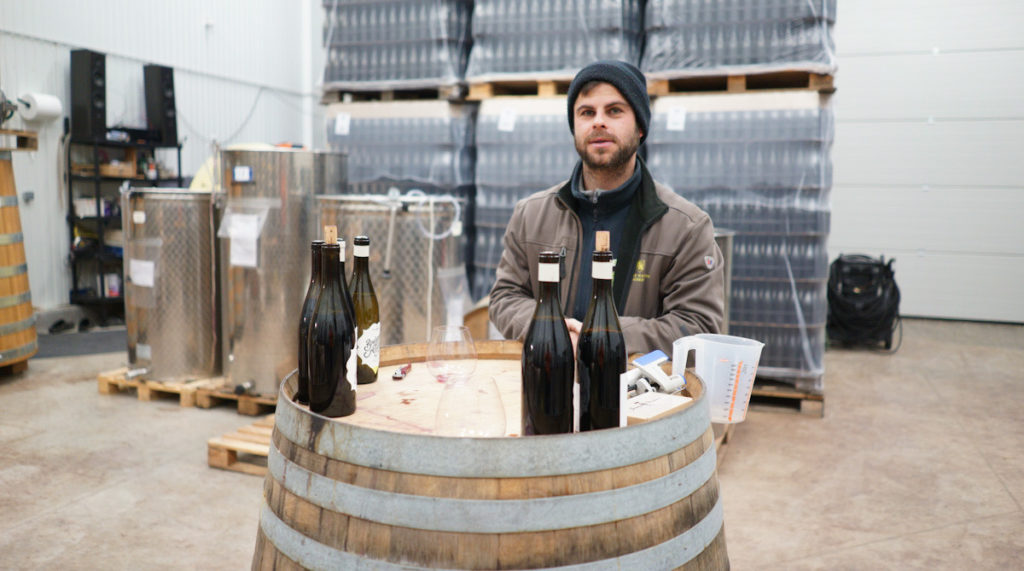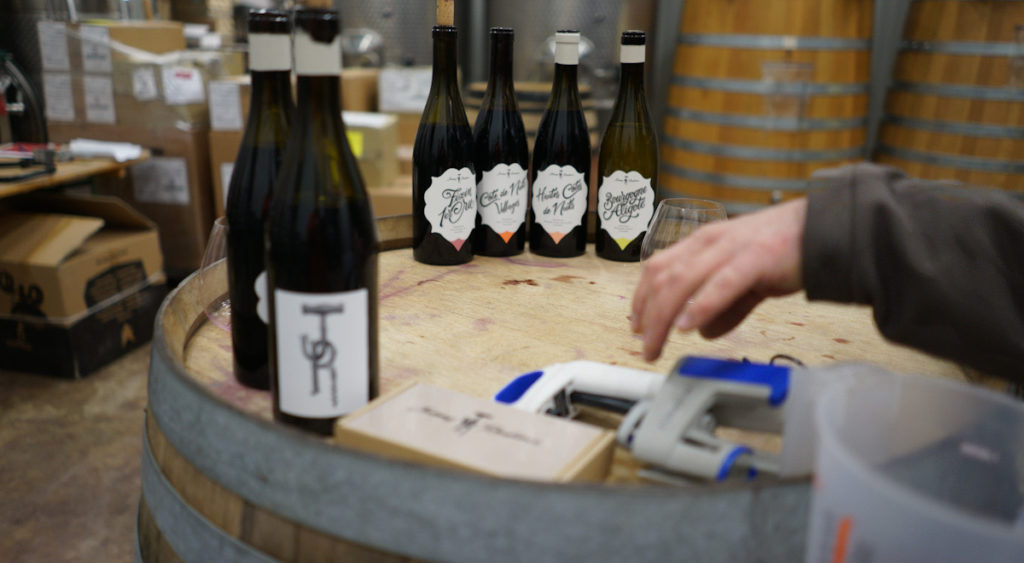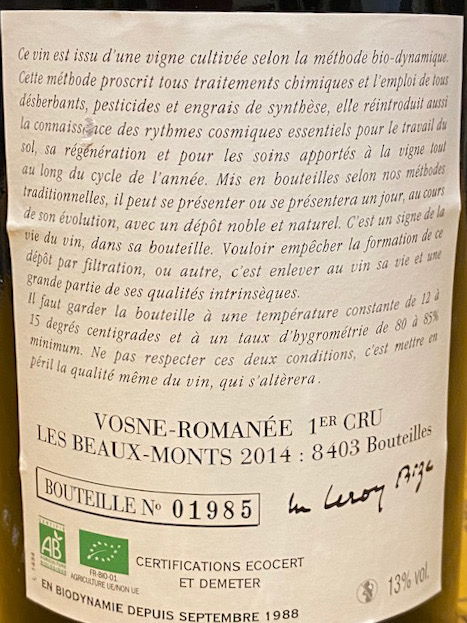Jérémy Recchione’s labels attract attention and focus – and so do the wines. They started out in 2017 as “regular” organic wines with little sulphur, but evolved further in 2018 and 2019 into wines made and bottled without sulphur.

All that is to say that, if the 2017s from Jérémy Recchione are organic, then the 2018s are wild things, and the 2019s go even further, as they have quite a different profile from the rather dense and robust ’18s.
Let’s go to 2019!
A bit about sulphur, and the effect of 10 mg/l
The 2018s were made without sulphur, while the ’17s had 10mg/l of free SO2, allowing us to compare the two vintages and see what effect the element had, and what its absence showed. The 2018 vintage is clearly bigger and more generous than 2017, and this, in combination with the no-sulphur regime, gave quite a different style.
The ’18s are more organic and voluptuous, with more whole-cluster notes as well as cinnamon and spicy floral hints that are expressive and forward. This is the call of the wild, although that said, the signature style is clearly recognizable in both vintages.
While the 2017 Gevrey-Chambertin is more delicate and precise, being shaped a bit by the sulphur, the 2018 is more forward, lush, and generous – organic if you like – with a character recalling a combination of Pacalet and Prieure-Roch.
Frankly, I was a bit surprised to hear that the 2017s contained as little as 10 mg/l, because the sulphur-free ’18s were so organic and forwardly opulent in comparison.
The 2019s are also different, due to the fresh, lively kick that’s characteristic of the vintage. This makes the 2019s more defined than the 2018s, but somehow they show as more feminine and perfumed as well, with an element of fragility.

Make no mistake: I like the 2019s for their uncompromised display of pinot fruit. But this is spoken as a consumer and Nuiton (I’m currently located 7 km from the Jeremey’s estate in Gilly).
Now, to the caveats.
The risks: transporting, storing and maturing
It is clear that non-sulphured wines are more sensitive to temperature and humidity changes – quite a lot more sensitive.
One really needs to take particular care in transporting, storing, and maturing these wines. Keep them cool – preferably below 12 degrees Celsius – under all circumstances and at all times, including during transport.

If one doesn’t, there can be problems. So please take care, and ensure that the merchant and importer understand this! These are not ideal candidates for the secondary market – bouncing back and forth between merchants and countries. Just sayin’…
The tasting on February 10
We tasted the following wines:
- Bourgogne Aligoté 2019
- Saint-Romain 2019
- Hautes Côtes de Nuits 2019
- Côte de Nuits villages 2019
- Gevrey-Chambertin 2019
- Fixin 1er cru Les Hervelets 2019
Jérémy Recchione Bourgogne Aligoté 2019
The 2019 Aligoté is reductive, yet vivid, lively, and quite organic, with a delicately expressive style. It’s only slightly perfumed, but the aromatics are rather wild, and enjoyable. It doesn’t have the sheer weight of the 2018, but the energy always shows with the 2019s.
(Drink from 2021) – Very Good – (87-89p) – Tasted 10/02/2021 – ![]()
Jérémy Recchione Saint-Romain 2019
This is from Les Jarrons; it is quite generous, rich, and velvety, yet with lovely acidity. It has delicate fruit and nice balance. Somehow the no-sulphur approach is giving better balance to the whites.
(Drink from 2021) – Very Good – (88-89p) – Tasted 10/02/2021 – 😁😁
Jérémy Recchione Hautes Côtes de Nuits 2019
The Hautes Côtes de Nuits is expressive, vinified with 100% whole bunches, leaving a delicate cinnamon note. Nuanced and complex, it is also quite wild and vivid as the acidity – or should I call it the freshness – of 2019 kicks in. This is drinking well.
(Drink from 2022) – Very Good – (87-88p) – Tasted 10/02/2021 – ![]()
Jérémy Recchione Côte de Nuits Villages 2019
Brochon turf – it appears there are more and more producers who are getting interesting grapes from Brochon’s vineyards, both the Côte de Nuits Villages and the Gevrey appellations. This has a nice citric note, and is elegant and detailed from its 30% destemmed fruit. It is showing very well indeed.
(Drink from 2022) – Very Good – (87-89p) – Tasted 10/02/2021 – ![]()
You need to login as a Premium subscriber to read the rest of this article. If you are not a Premium Subscriber, use the subscribe function and sign-up.

 - A true vin d’émotion – a Burgundy of passion
- A true vin d’émotion – a Burgundy of passion - A truly hedonistic wine – lively and enjoyable
- A truly hedonistic wine – lively and enjoyable - A vivacious wine for pure indulgance
- A vivacious wine for pure indulgance - A potential vin d´émotion - frais et léger
- A potential vin d´émotion - frais et léger
Leave a Reply
You must be logged in to post a comment.